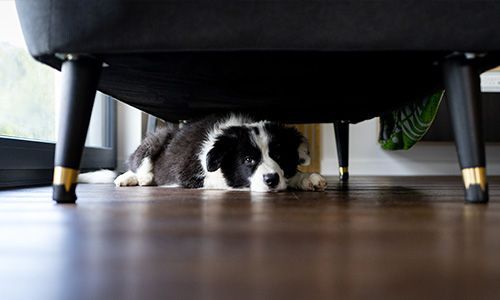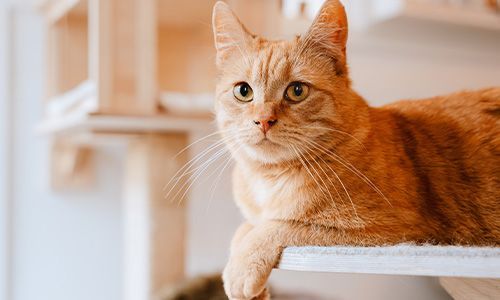How Much Playtime Does Your Cat Need?
Do you think your cat is bored? Here's how much playtime they need to stay entertained.
Cats are enigmatic creatures. They're known for their independence, yet they crave interaction and play.
But how much playtime does your cat really need?
This question often puzzles cat owners. Especially those who worry about their pet's well-being when they're away or considering a pet resort.
In this article, we'll delve into the importance of play for cats. We'll explore how long to play with your cat daily, and offer practical cat playtime tips.
Our goal is to help you ensure your feline friend is happy, healthy, and well-stimulated.
So, whether you're a new cat parent or an experienced owner, read on. This guide is for you.
Understanding Your Cat's Playtime Needs
Playtime is crucial for your cat's health and happiness. It offers both physical exercise and mental stimulation. Cats are natural hunters, and play mimics their instinctual activities.
Understanding your cat's playtime needs requires observing their behavior. Watch how they interact with toys and their energy levels throughout the day.
Each cat is unique, with different preferences and rhythms. Kittens may demand frequent bursts of energy, while older cats might prefer shorter, quieter sessions.
Playtime should be fun and fulfilling. It can prevent behavioral issues caused by boredom or inactivity.
Providing varied and engaging play sessions is key. This not only keeps your cat entertained but also strengthens your bond with them.
The Role of Play in a Cat's Life
Playing serves a vital role beyond mere entertainment. It simulates hunting, which keeps their instincts sharp.
Through play, cats release pent-up energy. This reduces the risk of obesity and related health problems.
Additionally, play encourages healthy social interactions. It helps shy cats gain confidence and energetic cats to channel their zest appropriately.
Remember, play isn't just an activity; it's a meaningful part of your cat's daily routine. It contributes to both their physical and emotional well-being.
How Much Playtime is Ideal?
How long to play with your cat per day depends on several factors. Age, health, and breed all play a part.
Kittens are the most active. They thrive on multiple short play sessions throughout the day. Aim for at least 40 minutes, divided across these bursts.
Adult cats, on the other hand, usually need 20-30 minutes daily. This can be split into two or more sessions to mimic their natural hunting patterns.
Senior cats still benefit from play, though their sessions should be gentler and shorter. About 15 minutes a day is often enough to keep them healthy and content.
Ultimately, watch your cat's reactions. Adjust playtime if they're not engaging or seem exhausted. Tailoring play to their energy levels and interests ensures each session is enjoyable and beneficial.
Cat Playtime Tips for Busy Owners
As a busy cat owner, fitting playtime into your schedule can be challenging. Nonetheless, it's essential for your cat's well-being. Playtime doesn't have to be long to be effective.
Try incorporating short but frequent play sessions into your day. A few minutes of focused interaction can be enough to keep your cat engaged.
Utilize natural pauses in your routine. While your morning coffee brews or during a TV commercial, sneak in some playtime.
Remember, the quality of playtime often outweighs quantity. Interactive toys can make short sessions lively and fulfilling.
Making the Most of Short Play Sessions
Maximizing brief play moments starts with understanding your cat's preferences. Notice which toys they respond to most enthusiastically.
Use toys that mimic prey behavior to capture their interest quickly. Feather wands and laser pointers are popular choices for fast engagement.
Engage your cat in activities that stimulate both their mind and body. This ensures even short sessions are enriching.
Aim to end play sessions on a high note, leaving your cat satisfied. This encourages them to look forward to the next round.
Interactive Toys and Automated Play Options
Interactive toys can greatly enrich playtime, especially when your schedule is tight. They engage your cat's hunting instincts, keeping them mentally and physically active.
Automated toys are a great option when you can't be directly involved. Many feature motions or sounds that captivate cats' attention.
For a varied experience, consider rotating toys. This keeps playtime fresh and prevents boredom.
Additionally, toys that dispense treats can add a rewarding twist to play. They promote problem-solving while satisfying your cat’s curiosity and hunger.
Playtime for Different Cat Life Stages
Cats' play needs vary as they move through life's stages. Understanding these needs is crucial. It ensures your cat remains happy and healthy.
Kittens are naturally curious and full of energy. They require ample playtime to burn off their exuberance. This stage is about exploration and learning.
Adult cats also need regular play to maintain fitness and mental agility. Engaging them keeps their hunting instincts sharp and wards off boredom.
As cats age, their energy decreases, but play still matters. Senior cats benefit from gentle activities that accommodate their physical limitations.
Kittens: Playful Explorers
Kittens' worlds revolve around play. This is how they learn about their environment and develop crucial survival skills.
Provide them with diverse toys that let them mimic hunting actions. This satisfies their natural instincts.
Short, frequent play sessions are ideal. They help expend energy while keeping your kitten's mind and body engaged.
Adult Cats: Maintaining Health and Vigor
Adult cats benefit from playtime to sustain their health and vigor. It helps prevent obesity and decreases stress.
Vary play activities to keep them interested and active. Interactive toys that mimic prey are especially effective.
Aim for at least two play sessions daily. These can be brief but should engage both mental and physical faculties.
Senior Cats: Gentle and Engaging Activities
Senior cats may slow down, but they still enjoy play tailored to their capabilities. Gentle activities keep them mentally stimulated.
Opt for toys that encourage slow, deliberate movements. They should not strain or stress your senior feline.
Providing stimulating environments, like window perches, can also offer enrichment. This keeps their senses engaged in a safe manner.
Signs Your Cat Needs More Playtime
Cats can show many signs they need more play. Recognizing these signs is key. It helps address your cat's physical and mental needs effectively.
Common signs include restlessness or excessive meowing. These can indicate boredom or excess energy. Cats may act out if not stimulated enough.
Destructive behaviors, like scratching furniture, often mean a cat is seeking engagement. Providing structured playtime can help reduce these tendencies.
Lack of play can also affect a cat's mood. Cats may become withdrawn or even aggressive. Regular playtime can help maintain a positive temperament.
Behavioral Cues and Physical Signs
Behavioral cues often reveal a lot about a cat's needs. Cats may chase their tails or engage in repetitive behaviors. These are signs of insufficient activity.
Watch for changes in sleep patterns. Cats that oversleep might be under-stimulated. They could benefit from increased interactive sessions.
Look for signs of weight gain. Physical inactivity may lead to obesity, which impacts overall health. Regular exercise through play can help manage weight.
Pay attention to your cat's interaction with toys. A lack of interest might mean a need for variety or more challenging activities. Rotate toys to reignite your cat's interest.
Choosing the Right Toys and Games
Selecting the right toys for your cat is essential for stimulating play. Each cat has different preferences, so consider their personality and interests. Interactive toys can engage cats mentally and physically, mimicking natural hunting activities.
Feather wands and laser pointers are popular for interactive play. These toys encourage chasing and pouncing, mimicking a cat's natural instincts. Engage your cat with these toys to keep them active and entertained.
Puzzle toys and treat dispensers can be used for when you're not around. These toys challenge your cat's problem-solving skills and provide mental stimulation. They help keep your cat occupied and can reduce boredom.
Look for toys that mimic prey movements, like those with erratic or unpredictable motion. These toys can captivate your cat's attention, sparking their curiosity and providing hours of fun. Regularly introduce new toys to maintain your cat’s interest.
Variety and Safety in Playtime
Offering a variety of toys keeps playtime exciting for your cat. Rotating toys regularly can prevent boredom and rekindle interest. This also gives your cat new challenges to explore, stimulating both body and mind.
Safety is important when choosing toys for your cat. Ensure toys are free from small parts that can be swallowed. Always supervise play with toys that might pose a choking hazard, such as strings or ribbons.
Inspect toys for wear and tear frequently. Replace them if they become damaged to prevent any risks to your cat. Durable toys made from quality materials are often a safe choice for active play.
Consider the environment as part of the playtime experience. Cat trees and climbing structures can complement your toy selection. This setup encourages natural behaviors like climbing and perching, enriching your cat's overall environment.
When You're Away: Ensuring Your Cat's Playtime at a Pet Resort
Leaving your cat at a pet resort can be worrying, but the right choice offers peace of mind. Look for a resort that prioritizes both physical and mental activities for your cat. This ensures your pet stays engaged and content.
Ask about the resort’s playtime schedule. Activities should align with your cat’s natural rhythms and energy levels. Offering both solitary and interactive play options can cater to different personality types.
A well-equipped resort will have varied play areas. These should be secure and clean, free from potential hazards. Such an environment encourages exploration and prevents your cat from feeling confined or bored.
Inquire about the staff-to-pet ratio. A higher ratio means more personalized attention and ensures that your cat receives the care they deserve. This personal touch is crucial for your cat's happiness and well-being.
What to Look for in a Pet Resort's Playtime Program
A quality playtime program at a pet resort should be comprehensive and engaging. It needs to include diverse activities that cater to different preferences. Ensure there are options for both calm and active play.
Check if the resort provides interactive play sessions with staff. This type of engagement is crucial for cats who thrive on social interaction. It also boosts your cat’s mental and emotional well-being while you are away.
Look for a rotation of toys and activities to prevent monotony. Variety keeps playtime fresh and challenging, encouraging cats to stay active. These dynamic environments foster curiosity and prevent anxiety.
Consider the resort’s approach to enrichment. Activities like puzzle feeding or clicker training can enhance your cat’s stay. Such programs stimulate both the mind and body, contributing to overall happiness.
The Importance of Certified Care and Personalized Attention
Staff certifications are vital for peace of mind when choosing a pet resort. Look for a resort with personnel certified in CPR and medication administration. This training ensures they can handle emergencies effectively.
Personalized attention is the cornerstone of excellent cat care. Ask if the resort tailors activities to individual needs and preferences. This approach makes your cat’s experience enjoyable and fulfilling.
A good resort will ask for details about your cat's habits and preferences during intake. This information allows staff to create a customized play schedule. Such care enhances the bond between your cat and their temporary caregivers.
Check for staff training in behavioral cues and health monitoring. Understanding these signs ensures your cat’s comfort and safety. Reassurance comes from knowing skilled professionals are caring for your beloved pet.
Conclusion: The Joy of Play for You and Your Cat
Playtime forms an essential bond between you and your cat. It nurtures mutual joy and understanding. This simple act enriches your pet's life and strengthens your connection.
Every cat needs regular play to stay healthy and happy. Tailor play activities to your cat's needs and personality. This thoughtful approach ensures a fulfilling experience for both of you.
Embrace the playful moments. They are more than just fun; they're key to a long, happy life for your feline friend. Enjoying these shared times makes the companionship more meaningful and rewarding.











